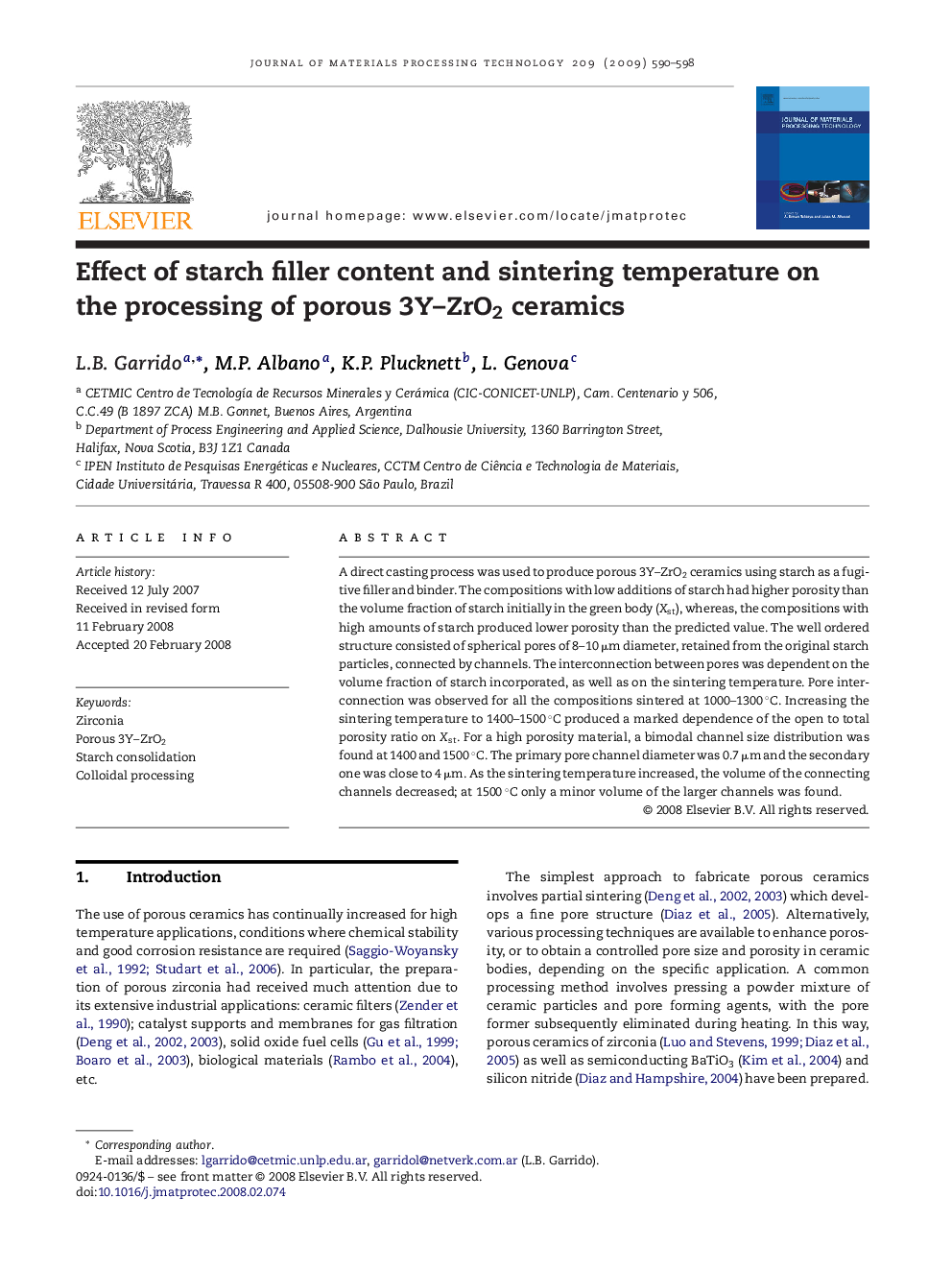| Article ID | Journal | Published Year | Pages | File Type |
|---|---|---|---|---|
| 798690 | Journal of Materials Processing Technology | 2009 | 9 Pages |
A direct casting process was used to produce porous 3Y–ZrO2 ceramics using starch as a fugitive filler and binder. The compositions with low additions of starch had higher porosity than the volume fraction of starch initially in the green body (Xst), whereas, the compositions with high amounts of starch produced lower porosity than the predicted value. The well ordered structure consisted of spherical pores of 8–10 μm diameter, retained from the original starch particles, connected by channels. The interconnection between pores was dependent on the volume fraction of starch incorporated, as well as on the sintering temperature. Pore interconnection was observed for all the compositions sintered at 1000–1300 °C. Increasing the sintering temperature to 1400–1500 °C produced a marked dependence of the open to total porosity ratio on Xst. For a high porosity material, a bimodal channel size distribution was found at 1400 and 1500 °C. The primary pore channel diameter was 0.7 μm and the secondary one was close to 4 μm. As the sintering temperature increased, the volume of the connecting channels decreased; at 1500 °C only a minor volume of the larger channels was found.
